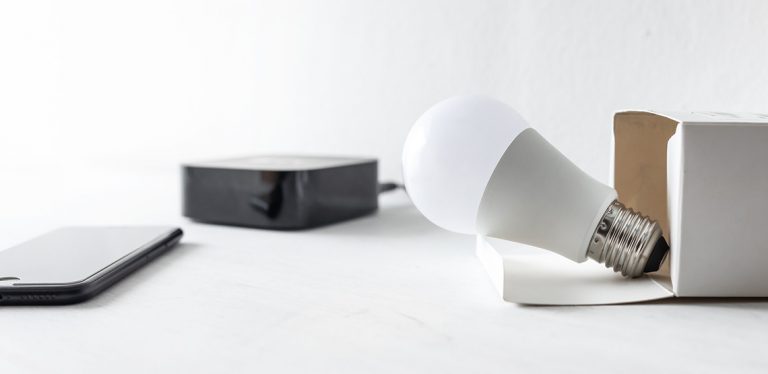More Than Just a Fad
Wearable tech burst into the mainstream not too long ago, and gained traction with fitness-inspired users, and those who like to follow trends. But what exactly is wearable tech? The name implies it to be any kind of wearable technology, such as headphones or digital watches. This is not the case.
Wearable tech actually describes wearable devices that connect to other devices, or provide some kind of life-enhancing convenience, such as a smartwatch that can Bluetooth connect to your smartphone, or wrist bracelets with heartbeat sensors.
It Started with Watches
The types of wearable tech have been steadily growing since they were limited to wrist-worn devices in early stages. An early example of wearable tech would be Fitbit trackers, which were introduced in early 2013. These wrist-worn devices track your steps, approximate calories burned, and sleeping patterns, all on a daily basis.
Smartwatches, as previously mentioned, also became popular around 2013, with releases from top brand-name companies like Samsung, Sony, and Apple following the year after. These were the first wrist-watches to have (limited) capabilities akin to smartphones, allowing users to see incoming notifications from their smartphone, dial and receive calls, and even take pictures and record video.
Because many smartwatches are Android based, crafty users have figured out ways to “hack” them and completely modify their appearance by installing third-party apps that allow greater control over the customization options. Apple Watch, on the other hand, is a bit more “locked down,” as Apple software is not open-source in the same way as Android.
Wearable Tech Is Expanding
We saw some tentative experimentation with “smart glasses,” which continues today as AR (augmented reality) becomes a more capable technology . However, the earliest smart glasses, such as the Google Glass, did not really take off with consumers when it was released, but people in the tech industry think that smart glasses will make a successful comeback when they’re able to include better AR technology.
Wearable tech has been accused of being a simple fad, as only people who are really interested in the technology have been pushing sales. We have certainly progressed, though. Wearable tech is no longer limited to just wrist-worn devices; in fact, we’ve seen things like rings, necklaces, and earrings that have connected capabilities, such as alerting the wearer of a call.
We’ve also seen wearable tech clothing, such as “smart goga pants” that connect to a smartphone app to help the user adjust their Yoga positioning.
Of course, these things are still limited to those primarily interested in the usefulness. You wouldn’t buy smart yoga pants if you weren’t already into yoga, right? But as wearable tech expands out of certain niche appeals, it certainly should be able to catch on with a more mainstream audience.
You May Also Like:
Related Search Topics (Ads)
Will Wearable Tech Become Mainstream?
Wearable tech is currently focused on the flashy rather than the functional. A major complaint of smartwatches, for example, is that the average consumer doesn’t want to spend $300 on a device that allows you to read text messages on your wrist. There are many other uses for smartwatches than just checking text messages, but many people just aren’t buying into it yet.
Of course, perhaps wearable tech doesn’t necessarily need to go mainstream. It’s done well filling the niches it fills. Wearable tech will also be adapted into all sorts of useful and practical industries.
Big names like Samsung and Apple are beginning to get seriously involved in the health-tracking side of it, and fitness trackers in the future are being touted as able to detect advanced biometric data, such as glucose levels for diabetics. There’s going to be a lot of serious investment into wearable tech for the medical industry.
In any case, the current state of wearable tech, future predictions aside, make it somewhat difficult to recommend any particular option for the average consumer, because there’s no “one size fits all” device out there (except perhaps smartwatches, as those become more advanced over time). There is a convenience factor to smartwatches that make them useful for almost anyone.
In order to decide if wearable tech is right for you, you’d have to figure out what you actually want out of it, and whether or not it can enrich your life or make it more convenient.
Weigh Your Options
If you’re interested in having the capabilities of a smartphone on your wrist, you should buy a smartwatch. If you want to know how many steps you take in a day, and the amount of calories you burn, you should buy a fitness bracelet.
Wearable tech may not be a simple fad, but it certainly isn’t outgrowing any specific niches in the near future, and that isn’t necessarily a bad thing, it’s just up to the consumer to determine which niche they are interested in.
If none of this sound appealing, then wait a few years to see how wearable tech developes. We’re seeing a lot of promising features from the future of AR glasses, such as being able to overlay your text messages, emails, GPS directions, and more, right in front of your eyes. That could certainly be a game-changer.

